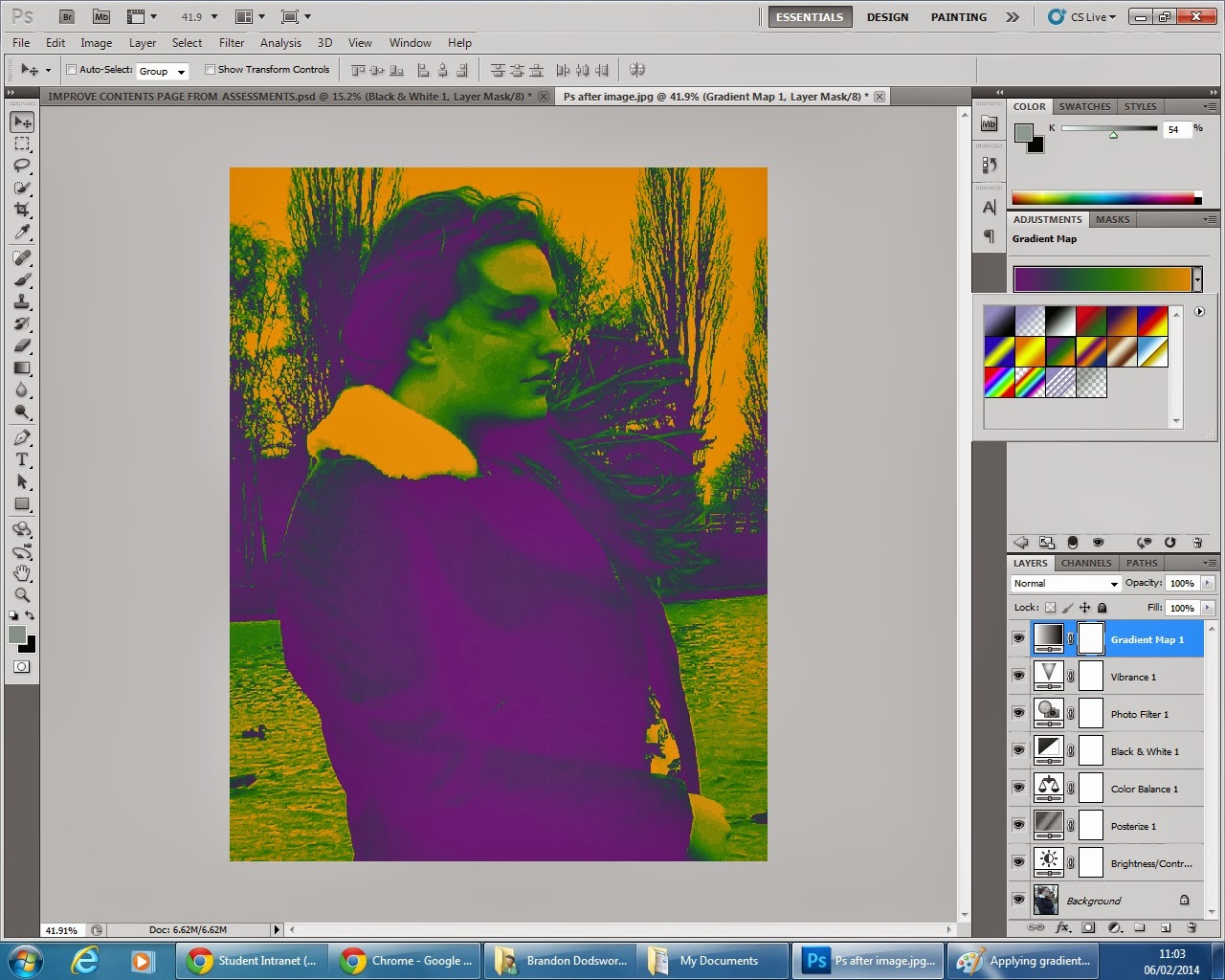The digipak for the band Metallica's album 'St Anger' is very abstract indeed. With the main image of a tied up clenched fist relating to the title, with a clenched fist usually being associated with anger. This is supported by the fact the fist is red, and the use of red surrounding the fist as part of the main image, which connotes violence and danger. A large majority of the front cover is a bright orange (at least I think it is, being colourblind and all) which stands out by a vast amount in comparison to many album covers I have studied. The album cover as well as the reverse are very bright, colourful and eye-catching. This works very well, as it makes digipak stand out, as it is interesting and unique. Although this is strange due to the fact that the genre of Metallic are heavy metal, which usually has dark connotations, with a very large use of the colour black. This album cover breaks conventions.

Although the front cover does a great job of standing out, the artist, or the albums name are not featured and are left anonymous. This is not necessarily a bad feature as it will lead an audience on to look further into it and want to find out the artists name.Throughout the digipak there peculiar images of dark religious depictions, which adds a strange twisted edge to the art style.

The back cover of the digipak unfolds to form a large picture of a red skeleton, which continues this theme of danger and anger. There is a necklace placed around the skeltons neck featuring the albums logo of a fist on it, which promotes continuity throughout the product. The background underlaying the skeleton is a murky, pale grey (at least I think it is) so that the large black, red, white and yellow image of the skeleton is very dominant and draws most attention in. The text of the track listing the reverse cover is in a quirky, sharp, demonic text, which carries on these strange representations of death.
There is a barcode, institution logos and small credits on the back of the album in tiny print which gives credit to the publishers involved as well as displaying the year produced. As another required feature a barcode is also placed here, smaller than many other aspects as it is fairly unimportant, but is a requirement. A website for the band is located above the barcode which provides an audience with a link the bands other media products.
Continuity is once again shown as the design of the main album disc is the exact same image as the front cover of the album, although in a contrasting black and white colour scheme. The DVD bonus features contained within the digipak is black, and dull, with grey writing. This disc needs no flashy design as it is an added subordinate product.
A booklet containing song lyrics is included as a conventional feature of digipaks with the exact same image as the inside of the pack, but using different framing. I could take several similar images and alternate between them for use on my front cover, back cover, disc, the inside of my digipak, and even include the same image for my front cover on my promo poster for recognition of the product, which is a common convention. The bands logo is featured in a large text in their signature style on the inside of the digipak for the first time other than the spine of the digipak which is in small print. Due to the fact that Metallica are such a large, famous band, this gives the impression that they do not need to openly advertise their name.










































